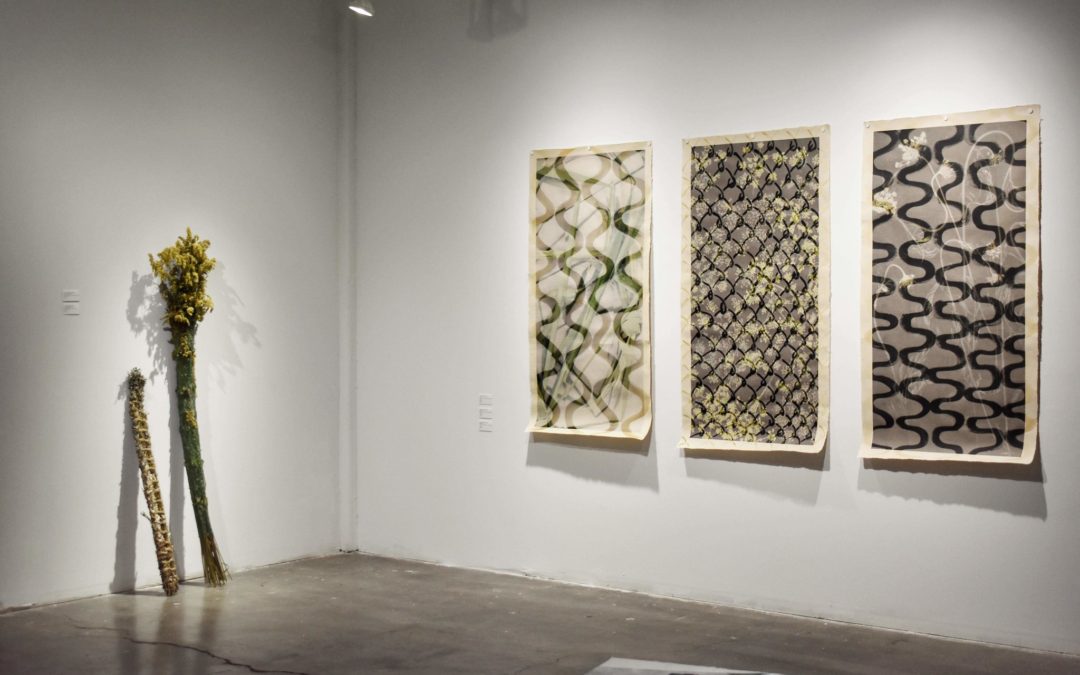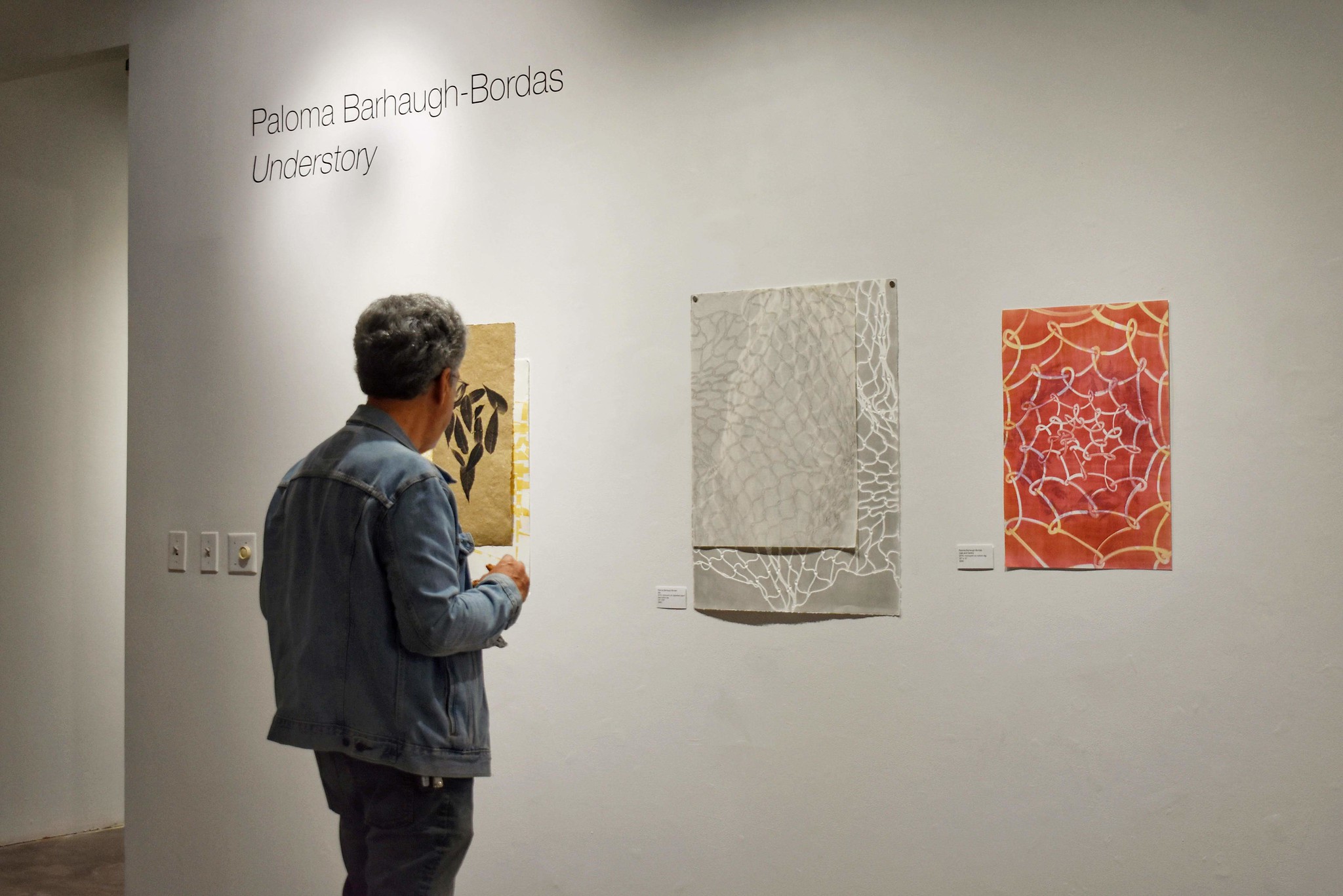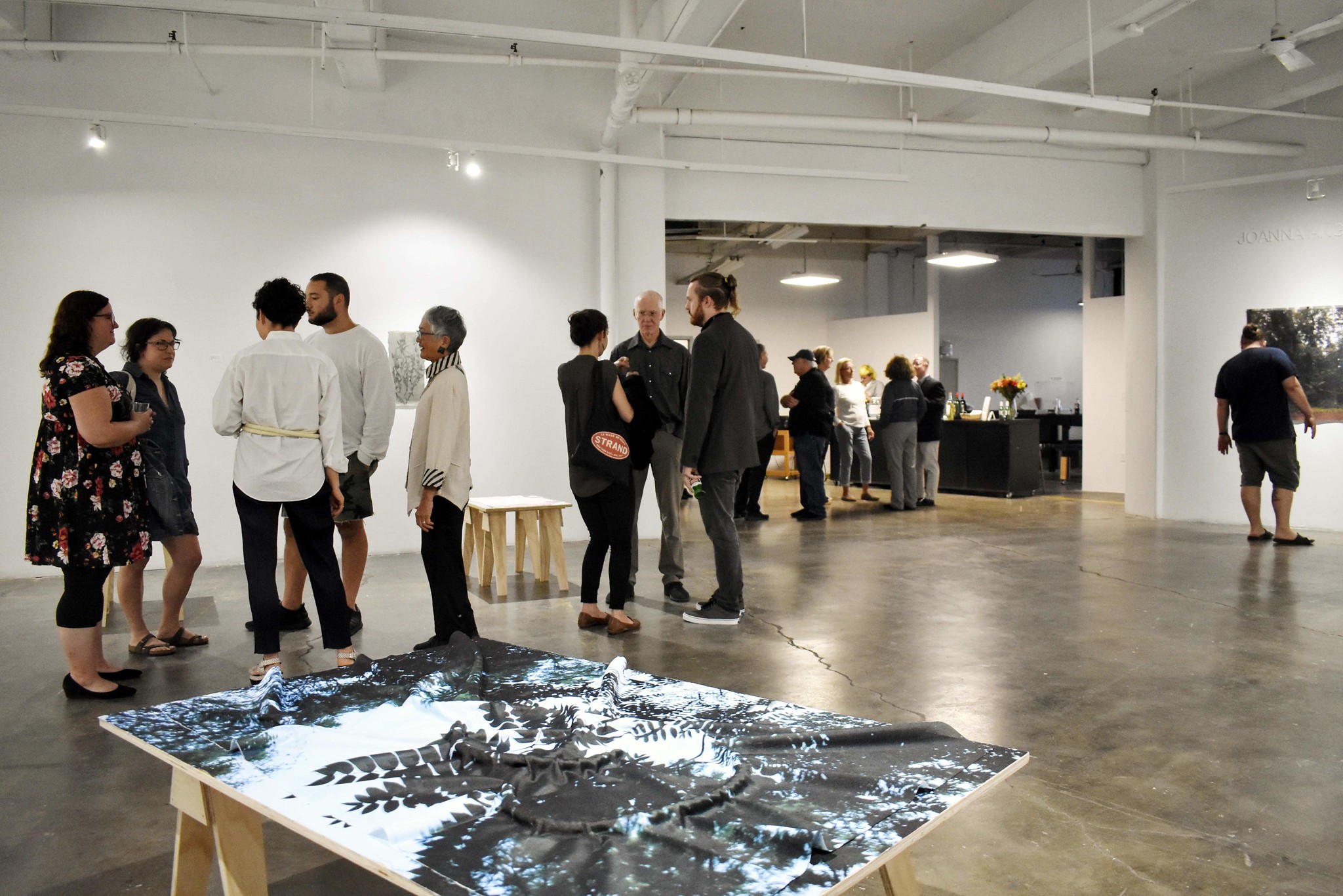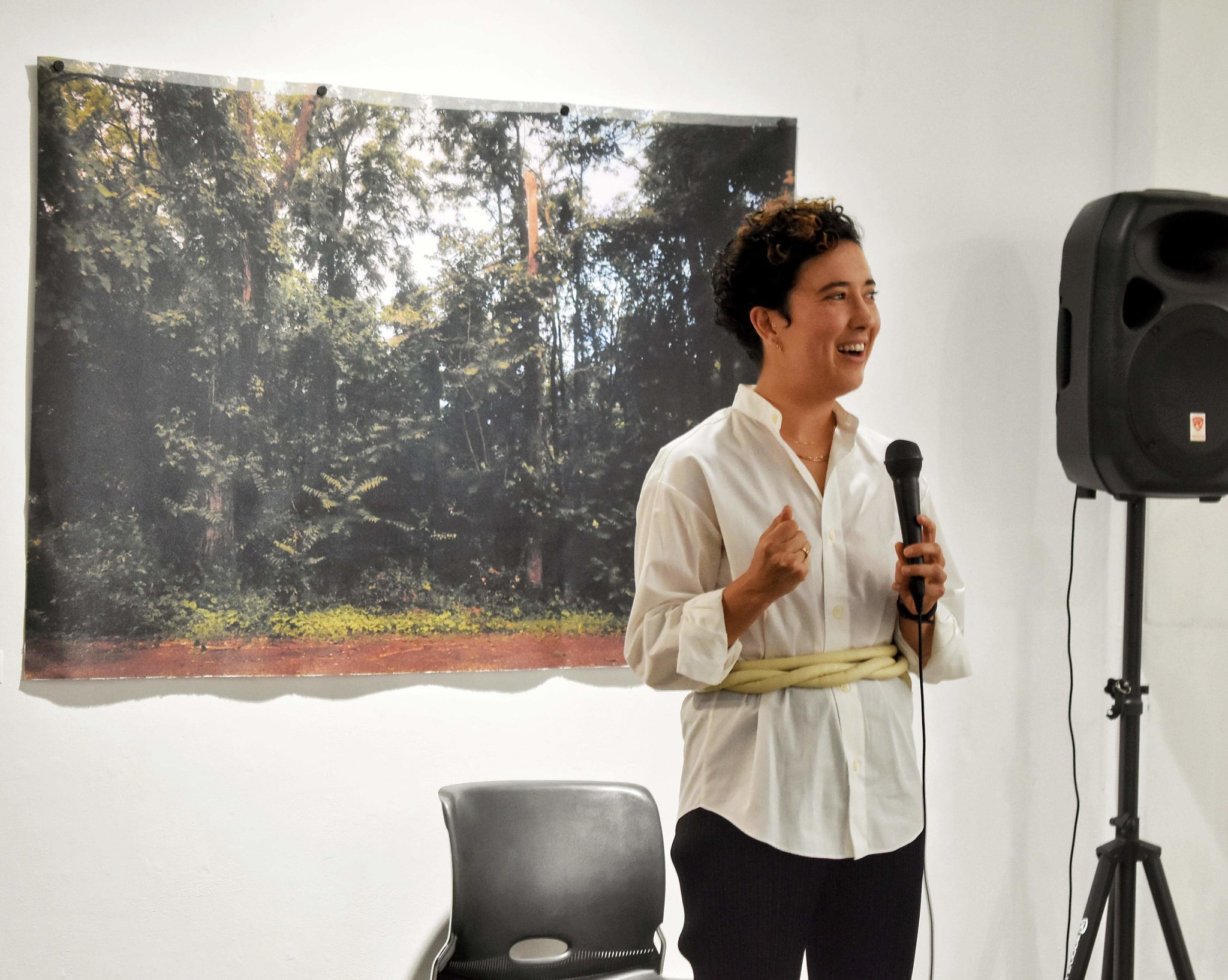Date/Time
Date(s) - 09/27/2019 - 11/02/2019
10:00 am until 5:00 pm
Location
Buffalo Arts Studio
Categories
Opening Reception: Friday, September 27, 2019, 5:00-8:00 pm
Part of M&T Fourth Friday at Tri-Main Center
Exhibition Catalogue, Paloma Barhaugh-Bordas and Phyllis Thompson
Press
“Q&A: Professor Explores Invasive Species through Art Exhibit” – The Ithacan, October 2019
Paloma Barhaugh-Bordas’s solo exhibition, “Understory,” is also comprised of multimedia monotype and collage to construct historical narratives. Her work adapts and appropriates the vernacular of the many regions she’s called home and traces the self-conscious search for cultural roots as a first-generation American. Her work is at once both familiar and unsettling.
Barhaugh-Bordas’s work, spanning print media, begins with photographs and drawings, often of plants, which have grown twisted and gnarled, recording in their own way the geographies they have occupied. Houseplants provide a link to nature in one’s intimate space, but are at the same time a sort of ecological colonialism.
Barhaugh-Bordas hold a deep belief in process, and uses print media to investigate and inform the meaning and purpose of serial works, which are full of repeated symbols, definitively graphic marks, and a flip-flop of translations from paper to press and back. Rather than creating multiples from a single image, Barhaugh-Bordas works in series and reproduce imagery and symbols across multiple prints.
For the work in this exhibition, Barhaugh-Bordas has collected and composed various plant forms and found objects directly onto print plates and scanner screens. She employed a direct method of image making, seeking to capture a sense of ecological colonialism while also speaking to the ways nature, and specifically invasive species, move through both time and space.
The layering of organic and inorganic material, along with gestural lines and patterns, suggest a tension between nature and the ways humans try to contain it. The placement of her work on top of hand-crafted tables as well as the gallery walls recalls her direct
process while also inviting viewers to actively investigate each composition.





